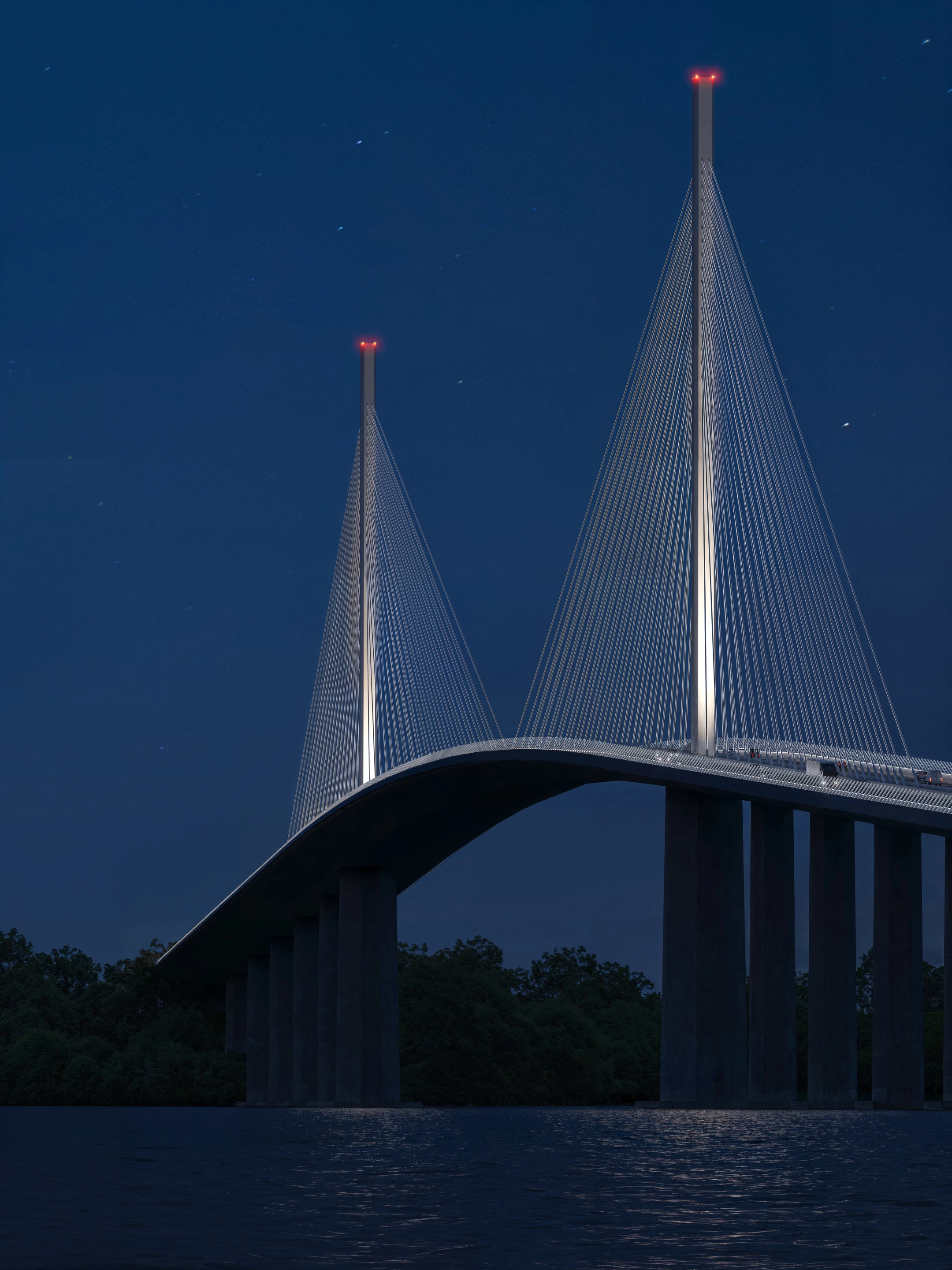Following the collapse of the Francis Scott Key Bridge in Baltimore, a team made up of Carlo Ratti Associati, along with construction firm Webuild and structural engineer Michel Virlogeux, has proposed a new – and safer – replacement.
The Francis Scott Key Bridge part-collapsed in March when an out-of-control container ship hit one of its structural supports. Though obviously the loss of life is the most tragic consequence, the disaster also represents the destruction of a much-needed transport link in Baltimore and needs to be replaced as soon as possible while ensuring the same thing can't happen again.
This proposal, named Gateway to America: A New Bridge for Baltimore, envisions a cable-stayed bridge. It addresses the key cause of the original bridge's collapse by enlarging the main span from 1,200 ft (almost 366 m) to 2,230 ft (680 m). This means that the primary support pillars of the crossing would now be situated in very shallow water, safely away from the navigation channel used by any large vessels.
The design would increase height clearance from 185 ft (56 m) to 230 ft (70 m), to meet modern shipping industry's standards. It would also include a larger roadway, with an additional lane in each direction, increasing traffic capacity across the bridge. Solar panels would be installed to reduce its grid-based energy usage too.

"In terms of sustainability, Baltimore's cable-stayed design is one of the most material-efficient ways to build at the proposed span, minimizing the project's embodied carbon," explains Carlo Ratti Associati. "Moreover, it avoids the need to construct artificial islands to protect the pillars, which would considerably disturb the ecosystem of the Patapsco River, which is home to several native migratory species of fish. The design also aims to minimize disturbance to the 'accidental bird sanctuary' on the nearby artificial island of Fort Carroll. Reflecting a commitment to renewable energy solutions, the design optimizes energy efficiency through the installation of photovoltaic panels across the whole span."
The idea isn't just some renders thrown together by a design studio: the team behind the proposal has a lot of experience. It builds on research by Carlo Ratti's work at the MIT Senseable City Lab, whose project Good Vibrations investigated innovative ways to monitor the structural safety of bridges using cellphone data. Additionally, Michel Virlogeux designed and co-designed several of the world's most significant bridges, including the tallest bridge on Earth, the Millau Viaduct in France. Webuild, meanwhile, was responsible for the speedy reconstruction of the Ponte Morandi in Genoa, Italy, following its collapse in August 2018.
A Carlo Ratti Associati representative told us that it's currently in the design stage but that the Maryland Transport Authority is currently collecting ideas for a replacement bridge and it expects a formal request for proposals to be imminent. It's important to note that the firm hasn't provided an expected budget or timeline itself, however US Government officials have said that they plan for the bridge to be in use by late-2028, at an estimated budget of up to US$1.9 billion.
Source: Carlo Ratti Associati







